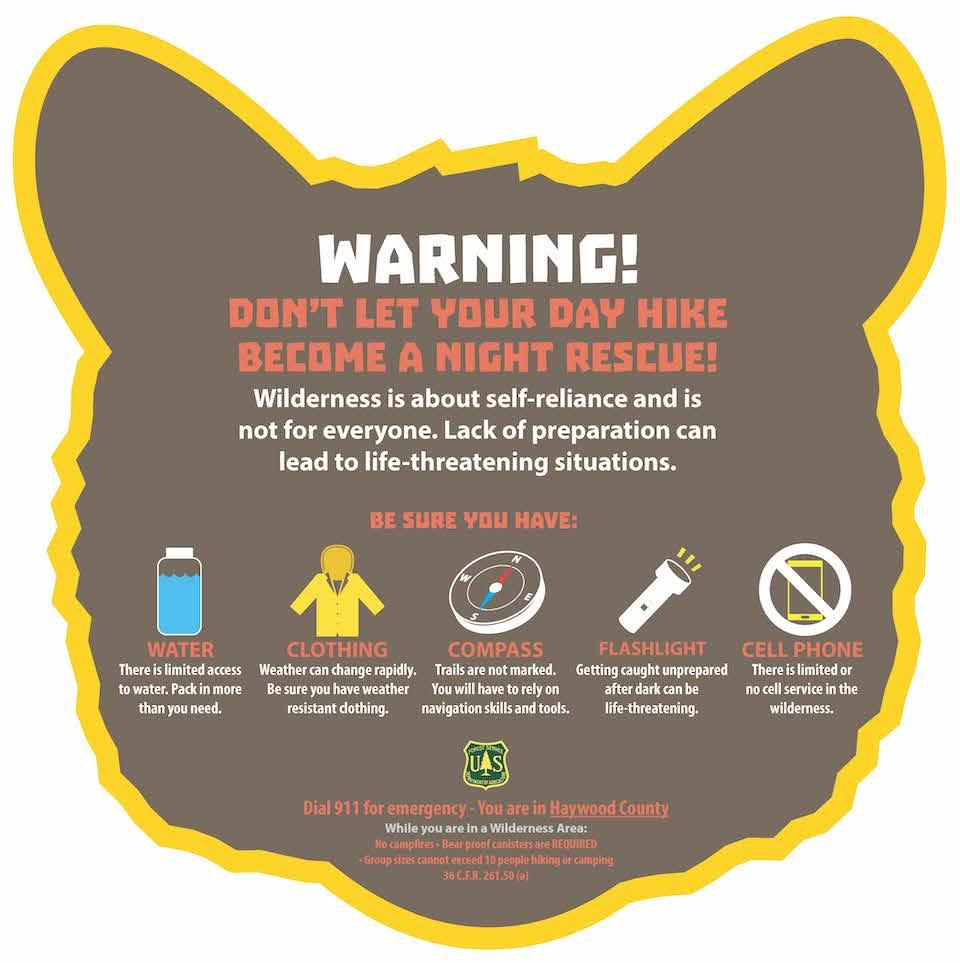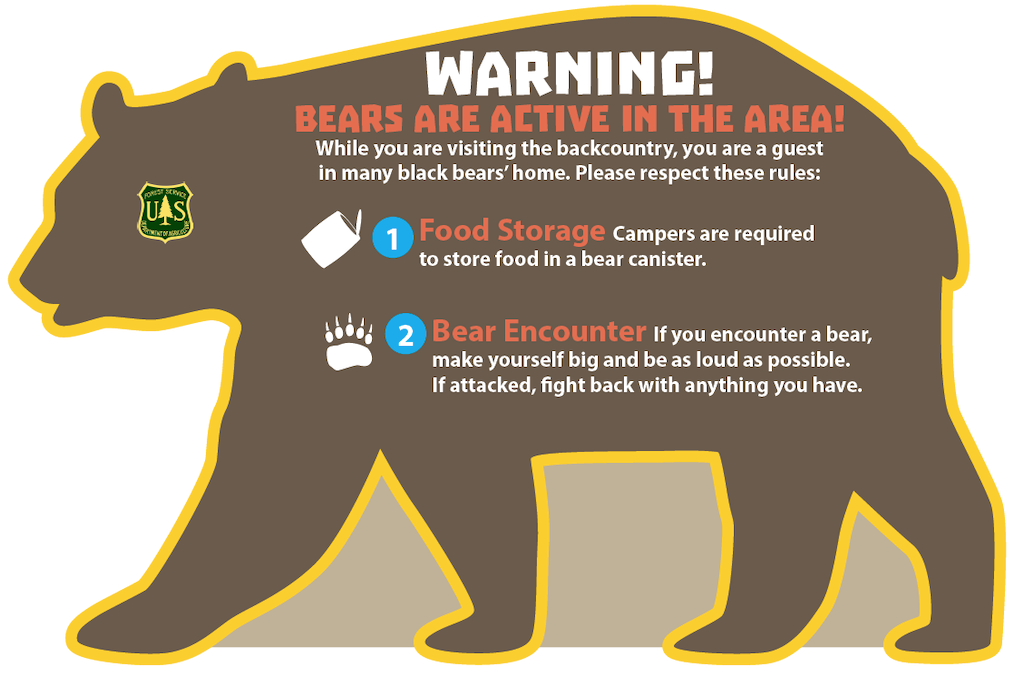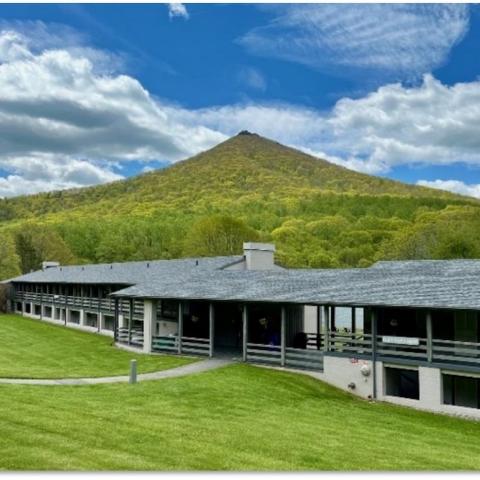
Wilderness safety signs have led to a decrease in search-and-rescue missions in one part of North Carolina along the Blue Ridge Parkway.
More than a year after informational safety signs were installed at Graveyard Fields in Pisgah National Forest, Haywood County (North Carolina) Emergency Services recorded a 50 percent decrease in search and rescue calls on federal land in the county.
Overall, 90 percent of search-and-rescue calls in Haywood County occur on federal land, according to Haywood County Emergency Services Director Greg Shuping.
“Before the wilderness signs were posted within the area, the majority of our search and rescues were for forest visitors who had taken a wrong turn and got lost. We realized that visitors may not be familiar with the area and could use some signage to help orient themselves within the wilderness area,” Shuping said.
The project was a collaboration between the Blue Ridge Parkway Foundation, The Pisgah Conservancy, Southern Appalachian Wilderness Stewards, U.S. Forest Service, and emergency services. In April 2019, 22 informational signs were installed within the recreation area accessible at milepost 418 on the Blue Ridge Parkway. The signs feature tips about bear safety and wilderness preparedness.
“These signs are helping so many people improve their outdoor experiences by staying safe,” said Carolyn Ward, CEO of the Blue Ridge Parkway Foundation. “In 20 years of involvement in interpretive research, this is one of the best examples I have ever seen of the power of well-designed signs to change behavior. We were delighted to work in partnership with so many other groups to keep visitors safe while exploring in and along the Blue Ridge Parkway.”

While bear incidents are not a main cause of search-and-rescue missions, the bear signs attract curious hikers and remind them to be safe on the trail/Blue Ridge Parkway.
Between May 2018 and April 2019, emergency services received a total of 32 search-and-rescue calls. During the same period from 2019 to 2020, there were 16 calls.
“The U.S. Forest Service and our partners share a common goal—to provide an enjoyable and safe experience for our visitors. Successful partnerships, like this one, can help us all achieve that goal through collaboration and shared resources,” said Natalie Lester, volunteer and partnerships coordinator for the Pisgah Ranger District. “We are very grateful to our partners for their collaboration on this important project and to Haywood County Emergency Services and the local Volunteer Fire Departments that provide such critical services to forest visitors."


 Support Essential Coverage of Essential Places
Support Essential Coverage of Essential Places







Comments
Good news, however I can't imagine the sign pictured having any impact on search and rescue calls. I'd be curious which ones had an impact and how prolific they are. I'm all for reducing search and rescue calls but also don't want to see an overabundance of signage in wilderness areas. With the advances in technology and proliferation of cell phones with mapping capability it is getting harder and harder to get lost. At any rate I hope the trend continues.
I had the same question, Wild, and was told that the signs attract the attention of hikers in general and reminds them to be careful out there....
Fascinating, perhaps those most likely to need search and rescue are also deterred by possible bear encounters so just turn arose and go back home.
The signs were installed mostly outside of the wilderness area close to entry points where it is most likely people could return to their cars to retrive needed supplies to make their trip safer. The data is representative of the entire area covered by the SAR team in that area. There are multiple entry points to the wilderness area so the signs were located at the primary entry points to the area.
Thanks Carolyn